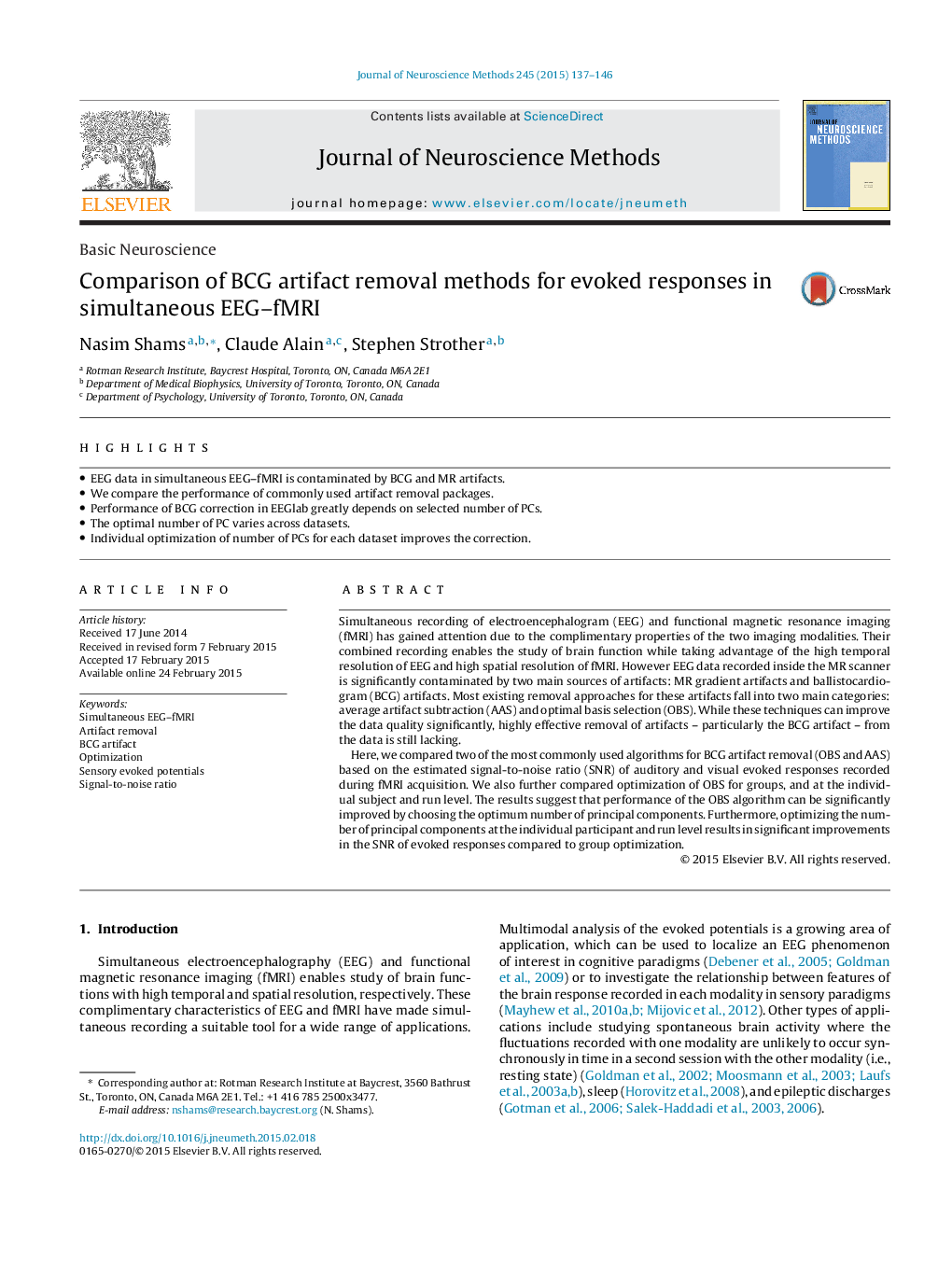| کد مقاله | کد نشریه | سال انتشار | مقاله انگلیسی | نسخه تمام متن |
|---|---|---|---|---|
| 6268279 | 1614624 | 2015 | 10 صفحه PDF | دانلود رایگان |

- EEG data in simultaneous EEG-fMRI is contaminated by BCG and MR artifacts.
- We compare the performance of commonly used artifact removal packages.
- Performance of BCG correction in EEGlab greatly depends on selected number of PCs.
- The optimal number of PC varies across datasets.
- Individual optimization of number of PCs for each dataset improves the correction.
Simultaneous recording of electroencephalogram (EEG) and functional magnetic resonance imaging (fMRI) has gained attention due to the complimentary properties of the two imaging modalities. Their combined recording enables the study of brain function while taking advantage of the high temporal resolution of EEG and high spatial resolution of fMRI. However EEG data recorded inside the MR scanner is significantly contaminated by two main sources of artifacts: MR gradient artifacts and ballistocardiogram (BCG) artifacts. Most existing removal approaches for these artifacts fall into two main categories: average artifact subtraction (AAS) and optimal basis selection (OBS). While these techniques can improve the data quality significantly, highly effective removal of artifacts - particularly the BCG artifact - from the data is still lacking.Here, we compared two of the most commonly used algorithms for BCG artifact removal (OBS and AAS) based on the estimated signal-to-noise ratio (SNR) of auditory and visual evoked responses recorded during fMRI acquisition. We also further compared optimization of OBS for groups, and at the individual subject and run level. The results suggest that performance of the OBS algorithm can be significantly improved by choosing the optimum number of principal components. Furthermore, optimizing the number of principal components at the individual participant and run level results in significant improvements in the SNR of evoked responses compared to group optimization.
Journal: Journal of Neuroscience Methods - Volume 245, 30 April 2015, Pages 137-146